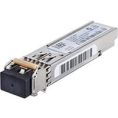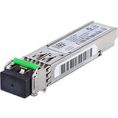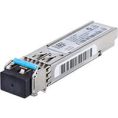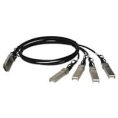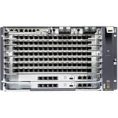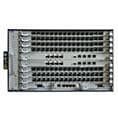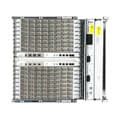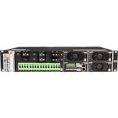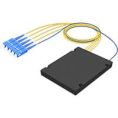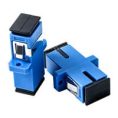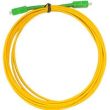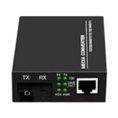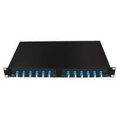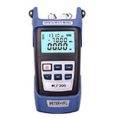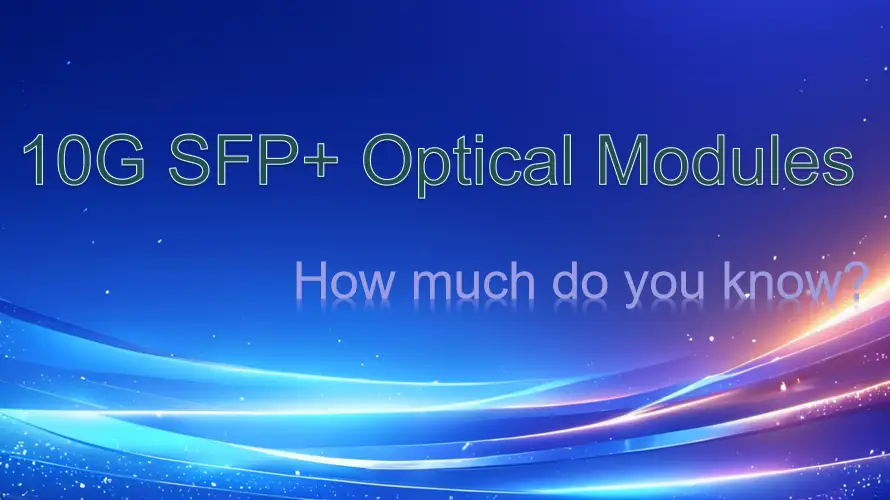10G SFP+ Optical Module is a type of SFP+ transceiver that supports 10 Gigabit per second (10Gbps) data rates and is an enhanced version of the standard SFP (Small Form-factor Pluggable) transceiver. Typically used in higher-speed connections between switches and servers or as the primary interface between switches and routers, offering higher performance with lower power consumption.
Key Features of 10G SFP+ Transceivers:
-
Data Rate: Supports 10Gbps (some variants also support 1G/2.5G/5G for backward compatibility).
-
Form Factor: SFP+ (SFP Plus), which is backward-compatible with SFP slots but optimized for 10G.
-
Connector Type: Typically uses LC duplex for fiber optic cables or Direct Attach Copper (DAC) for short-range connections.
-
Transmission Distance:
-
Multimode Fiber (SR): Up to 300m (850nm wavelength).
-
Single-mode Fiber (LR/ER/ZR): Ranges from 10km (LR) to 80km (ER/ZR) (1310/1550nm).
-
Copper (Twinax DAC/AOC): Up to 7m (passive DAC) or 15m (active DAC).
-
-
Low Power Consumption: Typically 1W or less, making it more efficient than older XFP modules.
-
Applications: Used in 10G Ethernet, Fibre Channel, data centers, enterprise networks, and telecom networks.
Common Types of 10G SFP+ Modules:
| Type | Description | Max Distance |
|---|---|---|
| SFP+ SR | Multimode (850nm), OM3/OM4 fiber | 300m |
| SFP+ LR | Single-mode (1310nm) | 10km |
| SFP+ LRM | Multimode (1310nm) for legacy MMF | 220m |
| SFP+ ER | Single-mode (1550nm) | 40km |
| SFP+ ZR | Extended single-mode | 80km |
| SFP+ DAC | Direct Attach Copper (Twinax) | 7m (passive) |
| SFP+ AOC | Active Optical Cable | 15-100m |
10G SFP+optical module is a popular category widely used in data centers, enterprise networks, edge devices, and CPEs.
-
Function: They’re transceiver modules used for 10 Gigabit Ethernet connections. Essentially, they send and receive data over either copper cables or fiber optic cables.
-
Applications: These modules are used in data centers, enterprise networks, and service provider applications. They allow you to connect switches, routers, and other networking devices.
-
Types: There are two main types of SFP+ modules: copper SFP+ and fiber SFP+. Copper SFP+ uses RJ-45 connectors for shorter distances (up to around 80 meters). Fiber SFP+ uses LC connectors for longer distances, depending on the specific module and fiber type (typically up to 300 meters or more).
- Within fiber SFP+ there are several variations like 10GBASE-SR for short distances on multimode fiber and 10GBASE-LR for long distances on single-mode fiber.
-
Benefits: SFP+ modules offer several advantages, including:
- Increased bandwidth: They provide significantly faster data transfer speeds compared to older Gigabit Ethernet standards.
- Scalability: They allow you to easily upgrade your network to 10 Gigabit speeds by simply swapping out the modules.
- Flexibility: They come in copper and fiber optic options, so you can choose the right type of connection for your needs.
Here are some additional things to keep in mind about 10G SFP+ modules:
- They are not hot-swappable in all devices. Always consult your device’s documentation before attempting to remove or insert an SFP+ module while the device is powered on.
- There are compatibility factors between SFP+ modules and the switch or other device they’ll be used with. While some SFP+ modules are designed to work with a variety of devices, others may be specific to a particular vendor or model.
This article is a brief introduction about 10G SFP+ transceivers, However, if you have any other questions not mentioned here, please feel free to contact us at sales@fiberolt.com and we will do our best to help.

